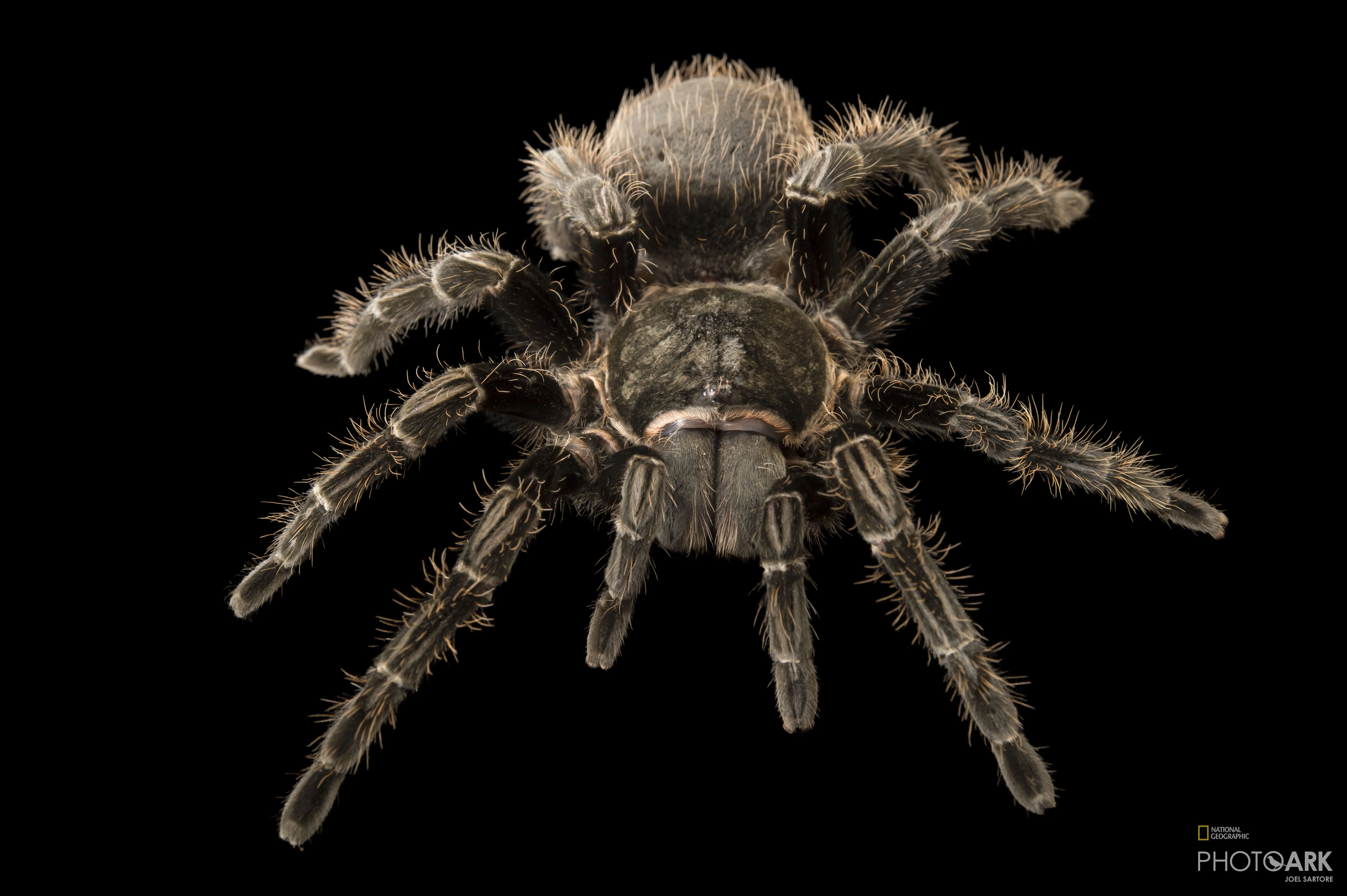The Curly Hair Tarantula: An Introduction
The Curly Hair Tarantula (Tliltocatl albopilosus), a captivating arachnid native to Central America, has become a popular choice for beginner and experienced tarantula keepers in the UK. Known for its docile temperament, striking appearance, and relatively easy care requirements, this species offers a fascinating glimpse into the world of exotic pets. This guide provides five key facts about the Curly Hair Tarantula for those considering adding one to their home, covering everything from their physical characteristics and habitat to where to find them for sale in the UK and how to care for them. Discover the allure of this unique species and learn what it takes to provide a thriving environment for your future pet.
Appearance and Characteristics
The Curly Hair Tarantula is easily recognizable by its distinctive appearance. The most notable feature is the abundance of dark brown to golden-brown hairs that cover its body, giving it a ‘curly’ appearance, particularly as they molt. These hairs aren’t actually curly but rather have a crimped texture that results in the overall effect. Their bodies, like all tarantulas, are divided into two main parts cephalothorax and abdomen. The cephalothorax houses the eyes, mouthparts, and legs, while the abdomen contains the internal organs. The overall size of an adult Curly Hair Tarantula can range from 5 to 6 inches in leg span. The females are generally larger and live longer than males.
Identifying Features
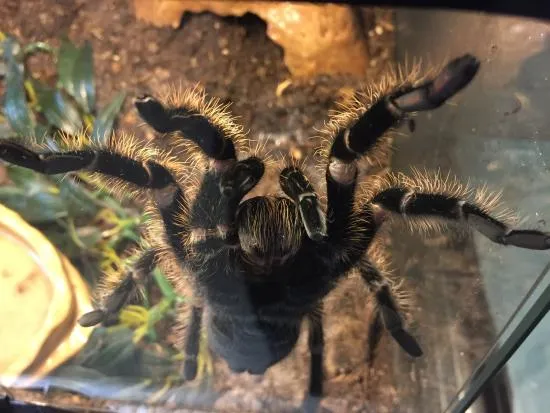
Besides the characteristic ‘curly’ hairs, the Curly Hair Tarantula possesses other identifying features. Look for the dark brown coloration of the carapace, which is the top shell of the cephalothorax. Their legs are a mix of brown and tan, and the abdomen is covered in the signature curly hairs. The overall coloration can vary slightly depending on the individual tarantula and its age. Young tarantulas are often lighter in color, and as they mature, they develop the darker hues. Identifying these features will help you accurately identify this species when looking for a Curly Hair Tarantula for sale in the UK or elsewhere.
Origin and Habitat
The Curly Hair Tarantula originates from the rainforests of Central America, specifically Costa Rica. In their natural habitat, they are ground-dwelling spiders that construct burrows or utilize existing shelters, such as under rocks or logs. They thrive in warm, humid environments. Understanding their natural habitat is essential for replicating it in captivity, which is crucial for the tarantula’s well-being. This involves providing the correct temperature, humidity, and substrate. In the UK, it’s crucial to maintain these environmental conditions consistently, especially during colder months. The use of heating and humidifying equipment is often necessary to ensure the tarantula’s health and longevity.
Why Choose a Curly Hair Tarantula?
The Curly Hair Tarantula is an excellent choice for both novice and experienced tarantula keepers in the UK. Its docile nature makes it less likely to bite or display defensive behaviors compared to some other species. They are relatively easy to care for, with straightforward housing and feeding requirements. Their striking appearance adds visual interest to any home, and their relatively long lifespan (females can live for over a decade) provides a long-term companion. The low maintenance requirements also make them an ideal pet for those with busy lifestyles. Their calm temperament makes them easier to observe and handle (with appropriate precautions), offering a unique opportunity to learn about arachnid behavior.
Temperament and Handling
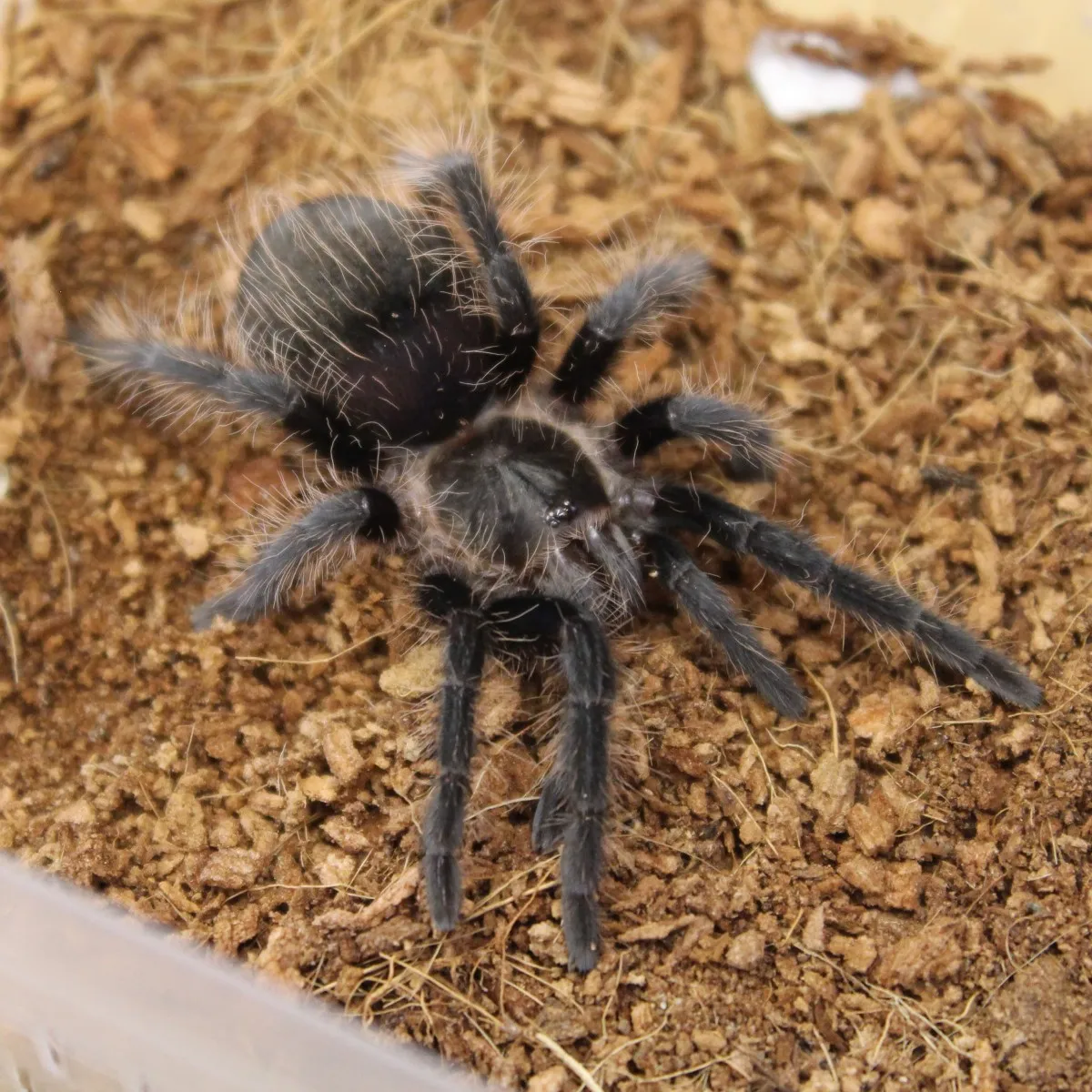
Curly Hair Tarantulas are generally considered docile, but it’s essential to remember that they are still wild animals and should be treated with respect. They are typically less likely to bite than other species, but they may flick urticating hairs (small, irritating hairs on their abdomen) as a defense mechanism if they feel threatened. While some keepers choose to handle their Curly Hair Tarantulas, it’s not strictly necessary and can potentially stress the tarantula. Observe their behavior closely to gauge their comfort level, and never force interaction. A relaxed tarantula will move slowly and steadily, while a stressed one might raise its front legs or adopt a defensive posture.
Handling Precautions
If you choose to handle your Curly Hair Tarantula, exercise extreme caution. Always wash your hands before and after handling to remove any scents or substances that could irritate the spider or pose a risk to your health. Handle the tarantula over a soft surface, such as a bed or the floor, in case it falls. Avoid sudden movements and be mindful of the tarantula’s body language. If it appears agitated, gently place it back in its enclosure. Be aware of the urticating hairs; avoid touching your eyes or face after handling the tarantula. If you experience skin irritation from the hairs, wash the area thoroughly with soap and water.
Where to Buy a Curly Hair Tarantula in the UK
When seeking a Curly Hair Tarantula for sale in the UK, it is crucial to find a reputable source. This will ensure that you are getting a healthy tarantula and reliable information about its care. Several options are available, including specialized reptile and exotic pet shops and online breeders. Local reptile expos and shows can also be excellent places to find a variety of tarantulas and talk directly to breeders. Always research the seller and read reviews from other customers to assess their reputation. Verify their knowledge of tarantula care and their commitment to animal welfare. Proper research can increase the likelihood of a positive and safe purchase.
Reputable Breeders and Suppliers
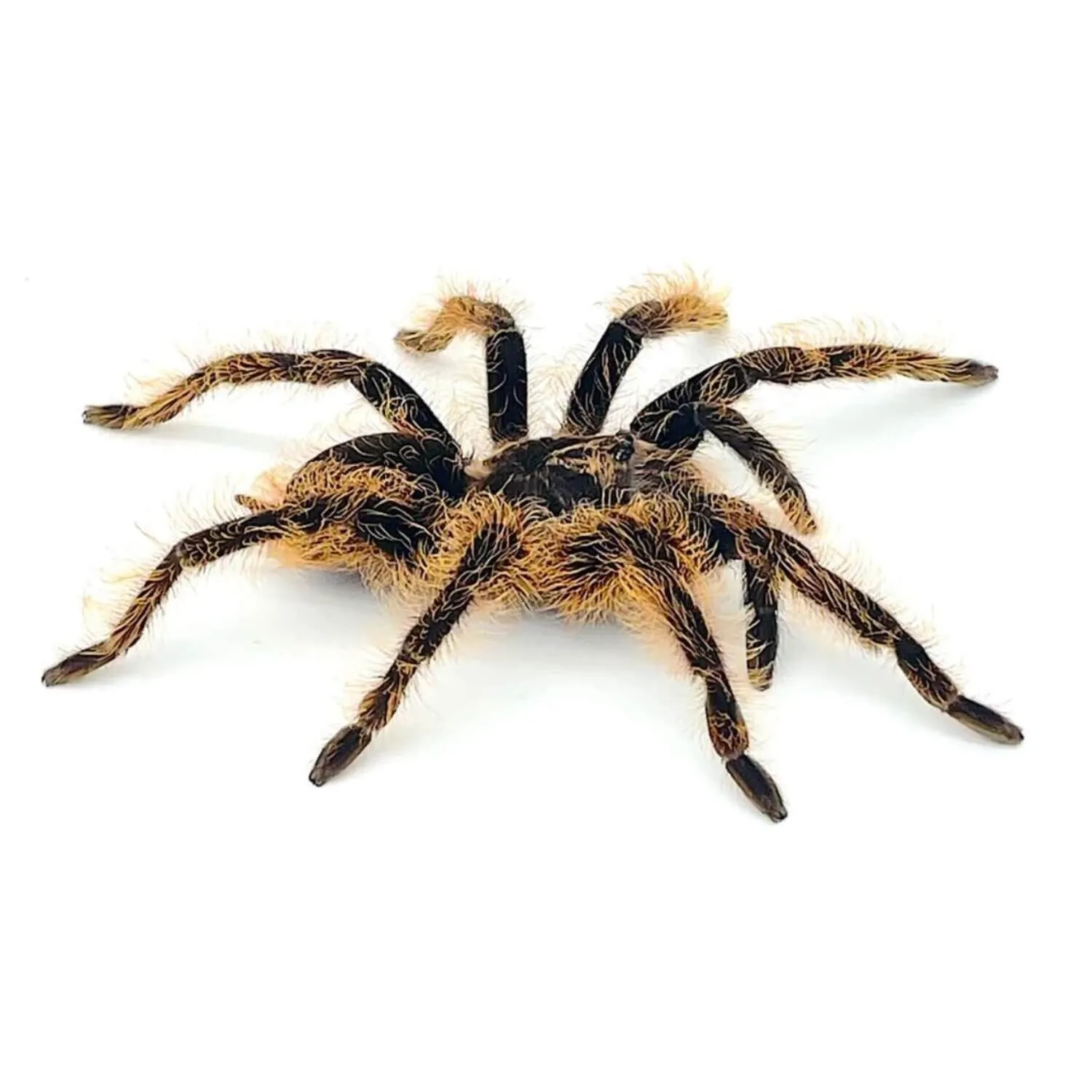
Reputable breeders and suppliers in the UK prioritize the health and well-being of their tarantulas. They often provide detailed information about the tarantula’s origins, age, and care requirements. Look for breeders that house their tarantulas in clean, appropriately sized enclosures and are knowledgeable about the species. Many online breeders have websites and social media pages where you can see pictures of their tarantulas and read customer reviews. Checking the breeder’s certifications and affiliations with reputable organizations can also indicate a commitment to quality and ethical practices. Buying from a reputable source is important to ensure that you are purchasing a healthy tarantula.
What to Look for When Purchasing
When purchasing a Curly Hair Tarantula, several factors indicate a healthy specimen. The tarantula should be active and alert, not sluggish or unresponsive. It should have a full abdomen, indicating that it has been eating regularly. Examine the tarantula for any signs of injury, such as missing legs or damaged fangs. Its body should appear clean, with no visible mites or parasites. If possible, ask the seller about the tarantula’s feeding history and molting schedule. Asking questions about its care will help you to understand the specific needs of your new pet, ensuring that you can provide the best possible environment for it. A reputable seller will readily provide this information.
Caring for Your Curly Hair Tarantula
Caring for a Curly Hair Tarantula involves replicating its natural habitat and providing proper nutrition. Creating a suitable environment is paramount to the tarantula’s health and well-being. Understanding their specific needs in terms of housing, substrate, and feeding is crucial. Following these basic guidelines can ensure that your Curly Hair Tarantula thrives in captivity. Always prioritize the tarantula’s comfort and safety. Creating a suitable environment is paramount to the tarantula’s health and well-being.
Housing Requirements
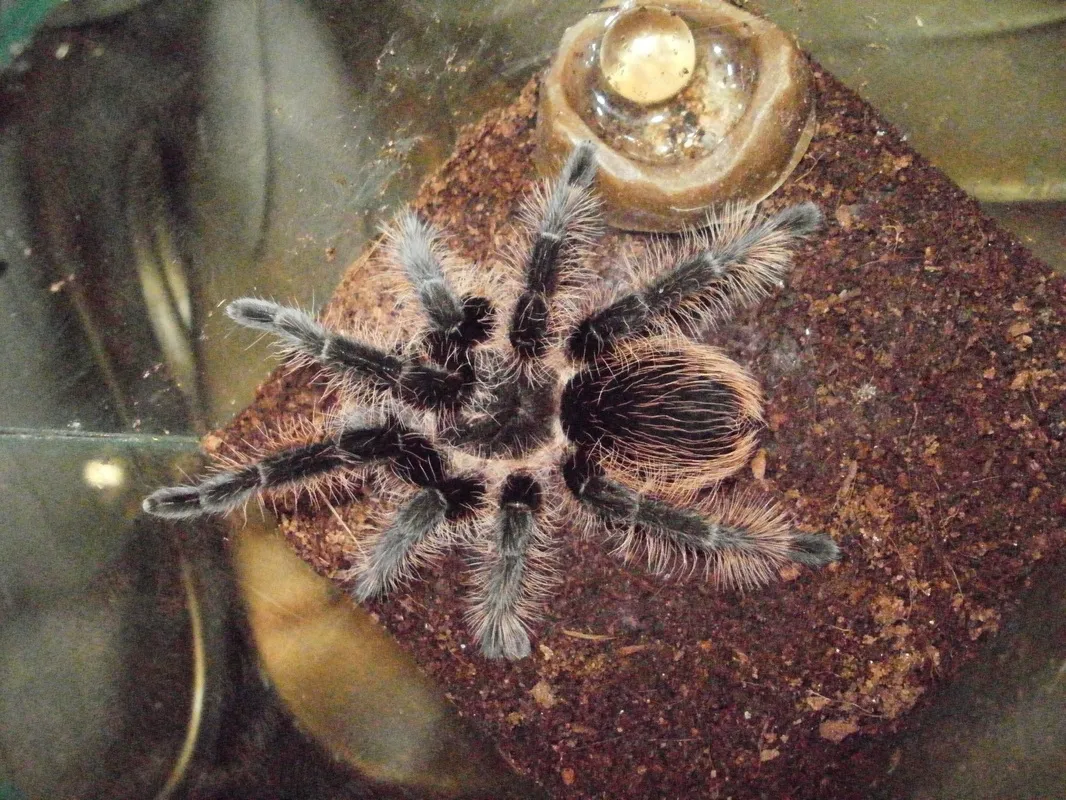
The enclosure should be appropriately sized, with a minimum of 3-5 times the tarantula’s leg span in width and length and height. A secure lid is essential to prevent escape. Ventilation is also necessary to prevent mold growth and ensure air circulation. The enclosure should be made of glass or plastic and should be easy to clean. Avoid using enclosures with sticky surfaces or anything that could harm the tarantula. The correct housing size ensures that the tarantula has enough space to move around. The enclosure size will also need to increase as your tarantula grows. This is crucial for its overall health.
Substrate and Decorations
The substrate should be deep enough for the tarantula to burrow. A mixture of peat moss, coconut fiber, and vermiculite is ideal for holding humidity and providing a comfortable environment. The substrate should be kept slightly moist but not soggy. Adding decorations, such as a hide (cork bark or a half-log) and artificial plants, can provide enrichment and security. Regularly clean the enclosure to maintain hygiene. Spot-clean the substrate and remove uneaten food to prevent the growth of mold and bacteria. Substrate should be replaced every 6–12 months.
Feeding Your Tarantula
Feeding is a crucial part of caring for your Curly Hair Tarantula. Provide a varied diet of appropriately sized insects. Crickets, mealworms, and roaches are common choices. The size of the prey should be approximately the same size as the tarantula’s body. Avoid feeding wild-caught insects, as they may contain parasites or pesticides. Always remove any uneaten food within 24 hours. Ensure a constant water supply by providing a shallow water dish or by misting the enclosure. A well-fed tarantula is a healthy tarantula, and the frequency of feeding will vary depending on the tarantula’s age and size.
Diet and Feeding Schedule
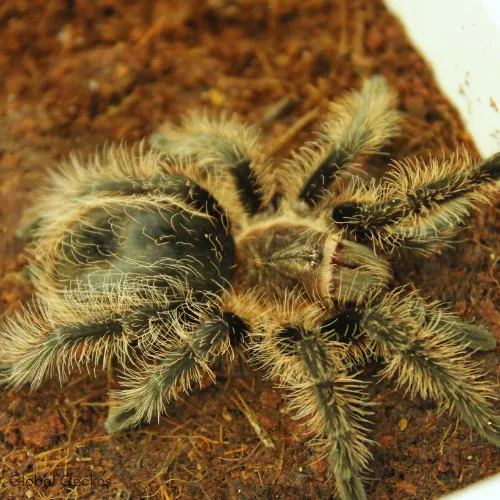
Younger tarantulas should be fed more frequently, about twice a week. Adult Curly Hair Tarantulas can be fed once or twice a week, depending on their size and appetite. Observe your tarantula to gauge its feeding needs. A well-fed tarantula will have a plump abdomen. Overfeeding can lead to health problems, so adjust the feeding schedule as needed. Always offer fresh water in a shallow dish. If the tarantula is about to molt, it may stop eating completely. Do not worry and continue to provide water.
Health and Common Issues
While Curly Hair Tarantulas are generally hardy, some health issues can arise. Dehydration, parasites, and injuries are possible. Always maintain proper humidity levels to prevent dehydration. Keep the enclosure clean to reduce the risk of parasites. If you notice any signs of illness, such as lethargy, loss of appetite, or unusual behavior, consult a veterinarian experienced with exotic pets. Proper care and a healthy environment minimize the risk of health problems. Knowing how to spot signs of disease is an essential part of responsible tarantula ownership.
Moulting Process
Moulting is a natural process where tarantulas shed their exoskeletons to grow. Before moulting, the tarantula may become less active and stop eating. They often create a web mat to help them flip over. Do not disturb the tarantula during this process. The moulting process can take several hours or even a day. After moulting, the tarantula’s new exoskeleton will be soft. Provide them with a few days to harden their new exoskeleton. Avoid handling them during this time. Once the exoskeleton hardens, they will resume eating and normal activity. Understanding the moulting process is essential for providing proper care.
The Curly Hair Tarantula: Is it Right For You?
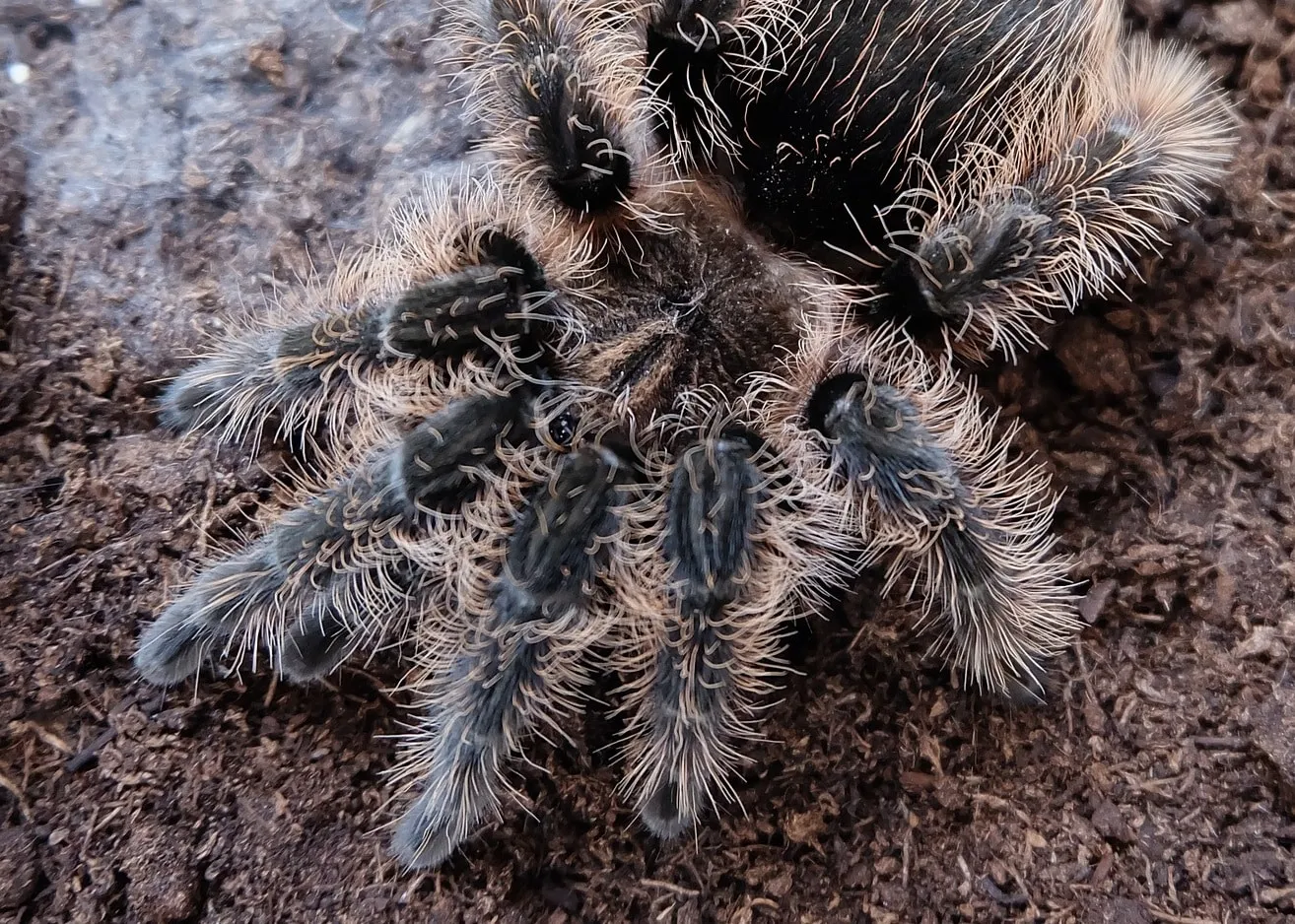
The Curly Hair Tarantula is a great choice for anyone looking to add an exotic pet to their collection. They are beautiful creatures that can bring great enjoyment to those willing to learn about their care and needs. The tarantula requires an investment in both time and resources to ensure a healthy and fulfilling life. If you are prepared to dedicate yourself to providing the right environment and care, a Curly Hair Tarantula can be a rewarding and fascinating pet. Consider your lifestyle, experience, and willingness to learn before acquiring one. Doing this will ensure that both you and the tarantula are happy and safe.
Cost of Ownership
The cost of owning a Curly Hair Tarantula includes the initial purchase price of the tarantula and the enclosure, plus ongoing expenses such as substrate, food, and any specialized equipment like a thermometer. Enclosures can range from £30 to £100. The tarantula itself can vary in price, starting at around £20 and going up depending on the size and age. Food and substrate are relatively inexpensive, with the main cost being for proper environmental control and care. Over time, the costs are relatively low compared to some other exotic pets. Be prepared to budget for potential veterinary care should the tarantula become ill or injured.
Conclusion
The Curly Hair Tarantula is an engaging and rewarding pet choice for those in the UK who are interested in learning more about the world of arachnids. By understanding their characteristics, providing the appropriate care, and purchasing from reputable sources, you can enjoy the experience of keeping this unique creature for many years. Remember to prioritize the tarantula’s needs, provide a safe environment, and always be respectful of this fascinating species. With proper knowledge and care, you can be a happy and responsible Curly Hair Tarantula owner.
